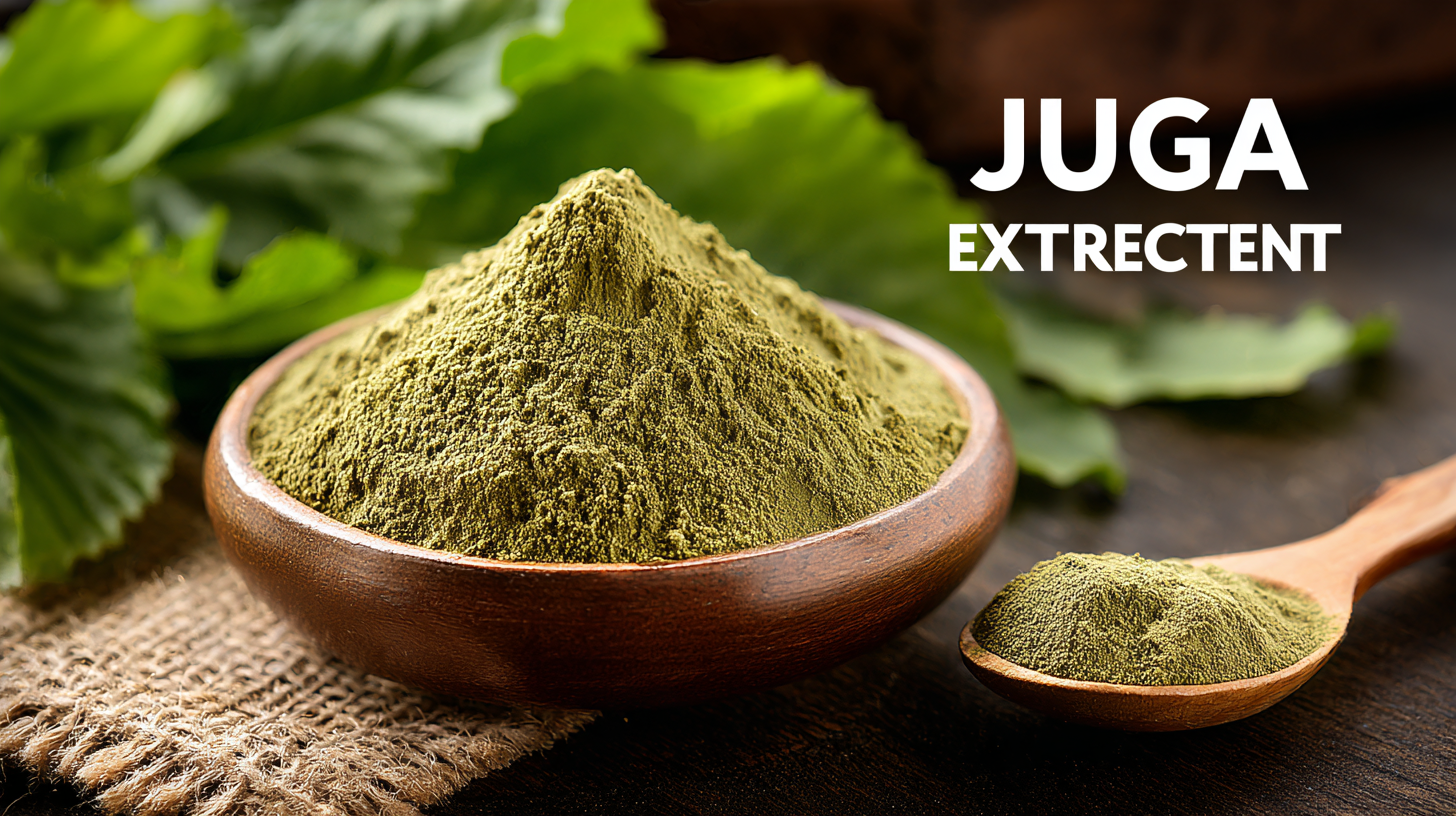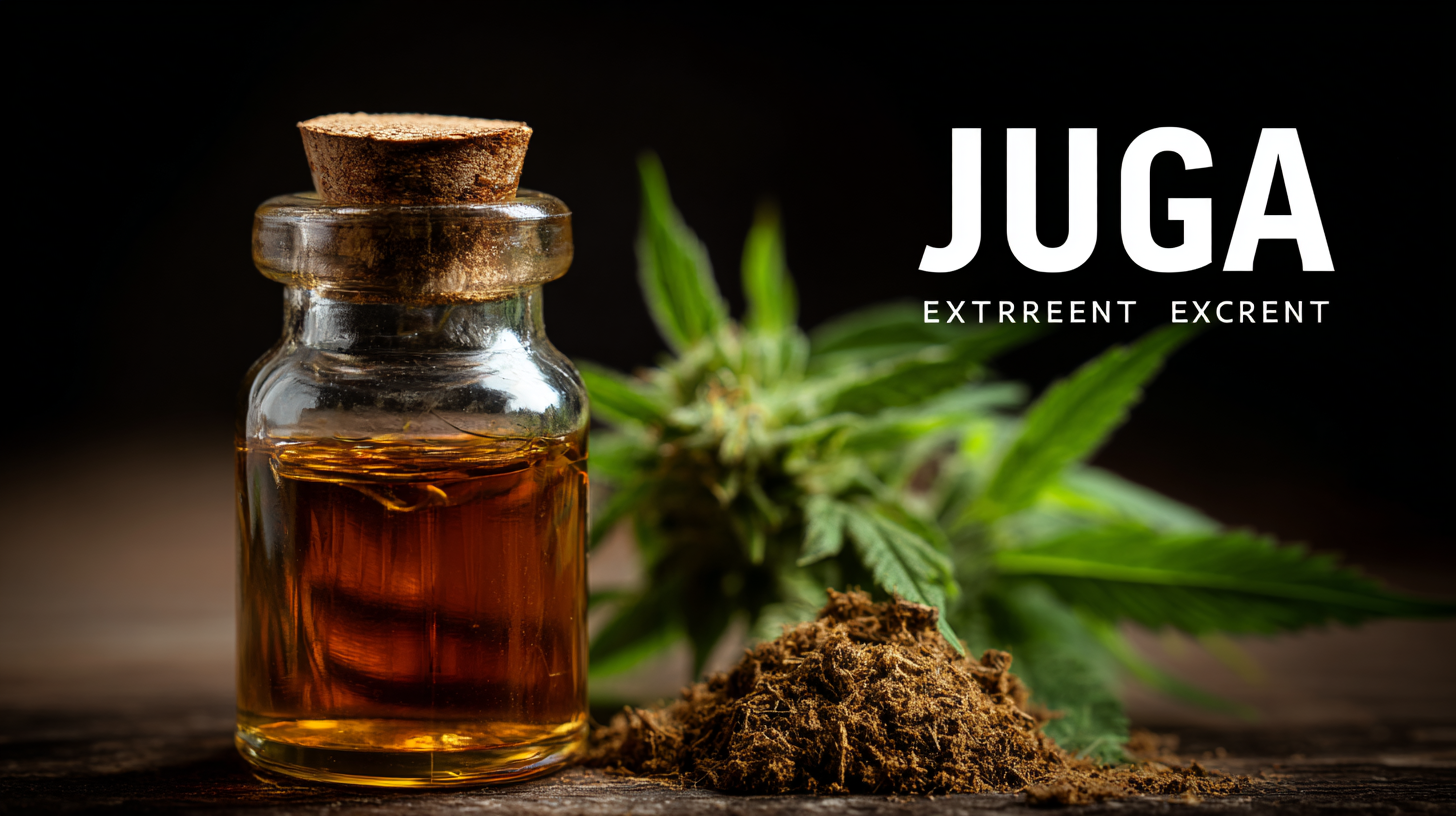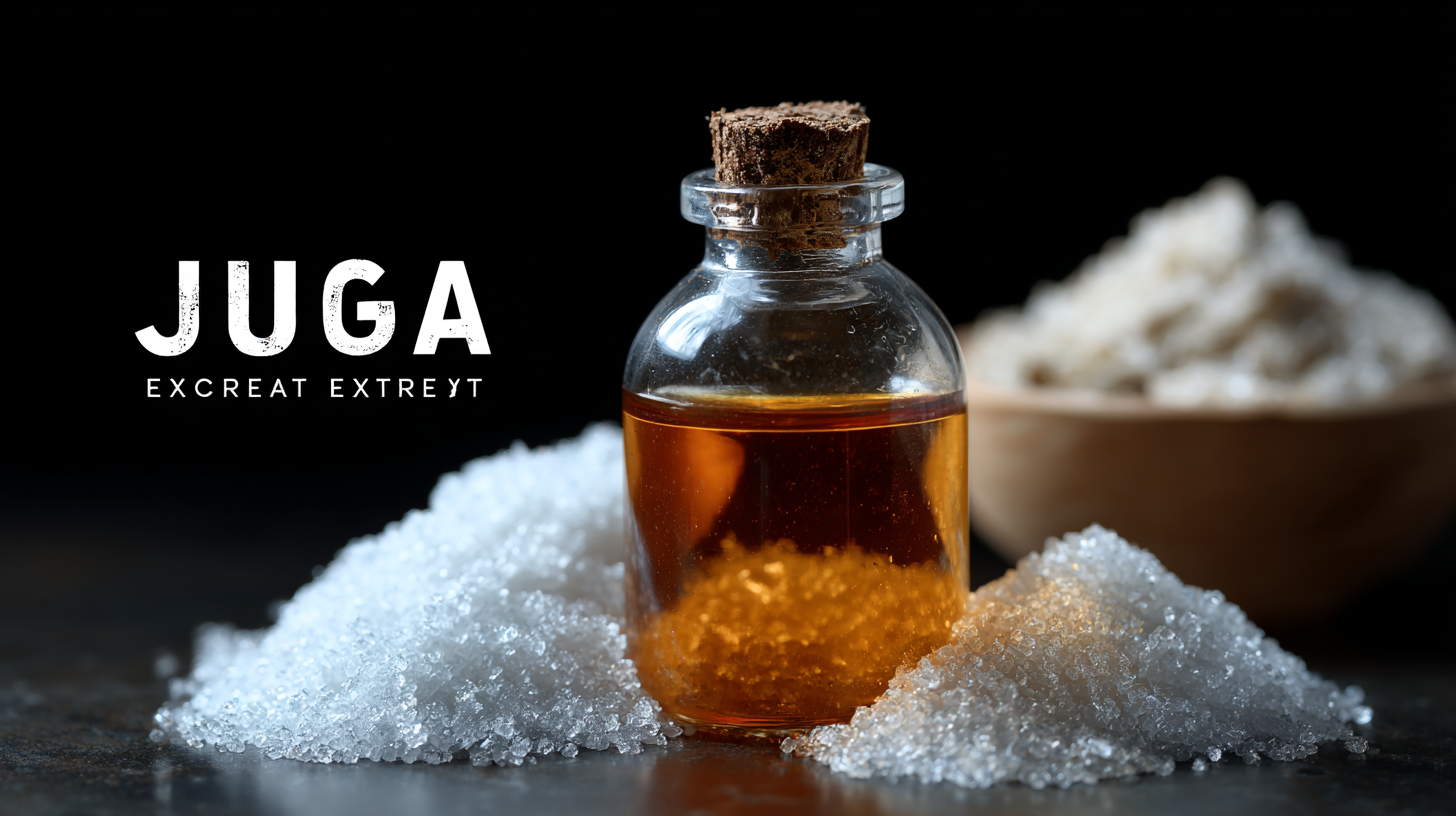Unveiling Juga Extract Specifications and How to Source the Best Quality for Your Business
In the rapidly evolving world of natural extracts, sourcing high-quality ingredients is paramount for businesses aiming to thrive in competitive markets. Juga Extract, known for its unique properties and diverse applications, is becoming increasingly sought after globally. As manufacturers prioritize quality and sustainability, understanding the specifications of Juga Extract is critical for entrepreneurs and manufacturers alike. In this blog, we will unveil the essential specifications of Juga Extract and provide insightful guidance on how to source the best quality for your business. By tapping into the expertise of leading manufacturing factories that rank among the best in the world, you can ensure that your products not only meet consumer demands but also maintain a competitive edge in the market. Join us as we explore the intricacies of Juga Extract and its pivotal role in your business success.
Understanding Juga Extract: Historical Context and Current Market Trends
Juga extract, derived from the Juga plant, has been gaining significant attention in both traditional medicine and modern wellness industries. Historically, this botanical extract has been utilized in various cultures for its potential health benefits, including
anti-inflammatory and antioxidant properties. Recent studies have shown a resurgence in interest, particularly in Asian markets, where the demand for natural remedies has surged.
According to a report by Grand View Research, the global herbal supplements market is expected to reach USD 116.6 billion by 2025, with botanical extracts like Juga leading the way due to their perceived efficacy and natural origins.
Current market trends indicate a strong shift towards clean-label products, with consumers increasingly favoring transparency and quality in the ingredients they choose. A survey conducted by Mintel revealed that 74% of consumers are concerned about the safety and purity of herbal supplements. Businesses seeking to capitalize on the rising popularity of Juga extract must prioritize sourcing high-quality and sustainably produced materials.
Working with reliable suppliers who can provide verifiable specifications and cultivation practices will not only enhance product quality but also align with consumer demands for ethical sourcing. As the market evolves, staying informed about regulatory standards and consumer preferences will be crucial for success in this competitive sector.
Analyzing the Nutritional Profile and Health Benefits of Juga Extract
Juga extract, derived from the Juga plant, has garnered attention for its impressive nutritional profile and potential health benefits. Rich in essential vitamins, minerals, and antioxidants, Juga extract can play a vital role in enhancing overall health and wellness. Its high content of flavonoids not only supports the immune system but also promotes cardiovascular health. Regular incorporation of Juga extract into the diet may aid in reducing inflammation and improving digestion, making it an excellent addition for those seeking to boost their nutritional intake naturally.
When sourcing Juga extract, it's crucial to prioritize quality. Look for products that are sourced from reputable suppliers who provide third-party testing to ensure purity and potency. Additionally, consider the extraction method;
cold-pressed extracts tend to retain more nutrients compared to those produced using heat.
One key tip for incorporating Juga extract into your daily routine is to blend it into smoothies or juices to mask its strong flavor while enhancing the nutritional profile of your beverages. Alternatively, you can incorporate it into your cooking, adding it to soups or sauces for an extra nutrient boost. By exploring different ways to use Juga extract, you can effortlessly take advantage of its health benefits while enriching your meals with natural goodness.
Key Specifications for Quality Juga Extract: What to Look For
When sourcing Juga extract for your business, it's critical to focus on specific key specifications that determine the quality of the product. A comprehensive report by the International Society of Juga Research highlights that the purity level of the extract should be at least 85% to ensure its effectiveness and safety for consumer use. Additionally, the presence of active compounds, particularly flavonoids and glycosides, is indicative of quality. It is suggested to look for extracts that have been standardized to contain at least 10% of these beneficial compounds, as they are responsible for the therapeutic properties associated with Juga.
Furthermore, the extraction method plays a pivotal role in the quality of the Juga extract. Reports from the Global Natural Products Association indicate that cold extraction methods preserve the delicate phytonutrients and prevent degradation often caused by heat. When selecting a supplier, asking for documentation related to their extraction processes and quality control measures is essential. Certifications from recognized bodies, such as the USDA Organic or ISO standards, can also provide additional assurance of product integrity. By paying attention to these specifications, businesses can source high-quality Juga extract that meets consumer expectations and regulatory requirements.

Strategies for Sourcing High-Quality Juga Extract from Reliable Suppliers
Sourcing high-quality Juga extract requires a strategic approach that emphasizes
reliability and transparency from suppliers. First, it's essential to conduct thorough research on potential suppliers to
understand their sourcing practices and manufacturing processes. Look for suppliers who provide detailed information
about their extraction methods and the quality controls in place. Certifications such as organic
or Fair Trade can also serve as indicators of quality and ethical practices.
Additionally, building a relationship with suppliers can yield
valuable insights and foster trust. Engage in open communication to discuss your specific needs and ask for samples to evaluate the product firsthand.
Attending industry trade shows or expos can also provide opportunities to connect with reputable suppliers
and experience their offerings in person. By prioritizing these strategies, businesses can ensure they select the
best-quality Juga extract that meets their standards and supports their brand values.
The Competitive Landscape: China's Role in Juga Extract Production and Global Exportation
China plays a pivotal role in the production and global exportation of Juga extract, similar to its influence in other sectors such as batteries and agricultural commodities. As the Chinese market consolidates its standings, the trend mirrors that of the global power battery sector, where Chinese enterprises now hold over 60% of market share. This shift towards dominance underscores the importance of quality sourcing in emerging markets, including Juga, to align with industry standards and consumer expectations.
Furthermore, examining the competition landscape reveals that while Brazil and the United States dominate the soybean market, accounting for nearly 70% of global production, similar consolidation is evident in Juga extract markets. Companies must navigate this competitive terrain cautiously, as the rising demand for high-quality extracts propels multiple stakeholders into a race for superior sourcing and manufacturing practices. Reports indicate that the growth trajectory in agricultural exports not only highlights potential opportunities but also necessitates an understanding of global supply chain dynamics, which are increasingly influenced by China’s strategic positioning.

About Us
Products
Nutraceuticals
Botanical Extracts
Berberis Extract
Ginkgo Biloba Extract
Rutin
Quercetin
Grape Seed Extract
European Bilberry Extract
Broccoli Seed Extract
Fisetin
Ajuga Extract
Resveratrol
Stevia Leaf Extract
Green Tea Extract
Olive Leaf Extract
Epimedium Extract
Rhodiola Rosea Extract
Panax Ginseng Extract
Pomegranate Extract
Garlic Extract
Milk Thistle Extract
Black Pepper Extract
Fruit & Vegetable Juice Powder
Customized Service
News
Blog
Contact Us


